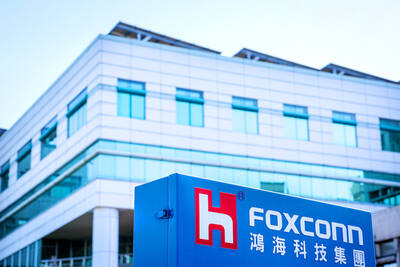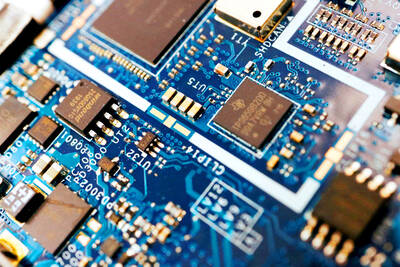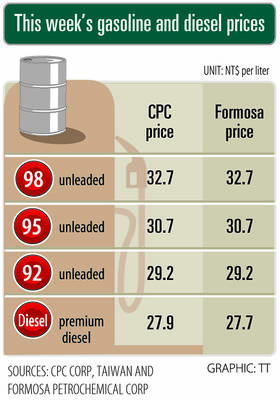The Reserve Bank of India (RBI) yesterday cut its key interest rate for the first time in nearly five years, as it seeks to boost the sluggish economy and sees inflation easing toward its 4 percent target.
India’s Monetary Policy Committee (MPC), which consists of three RBI and three external members, cut the repurchase rate by 25 basis points to 6.25 percent after having kept it unchanged for 11 straight policy meetings.
The decision was in line with a Reuters poll, in which more than 70 percent of economists had predicted a quarter-point reduction, and marked the first reduction in India’s key rate since May 2020.

Photo: Bloomberg
All six committee members voted to cut the rate and to maintain the monetary policy stance at “neutral.”
The committee noted that although growth is expected to recover, it is much lower than the 8.2 percent in 2023 to 2024 and inflation dynamics have opened space for rate easing, RBI Governor Sanjay Malhotra said in the first policy review since his appointment in December.
Improving employment conditions, recently announced tax cuts, moderating inflation and good agricultural output after a strong monsoon would help growth, Malhotra said.
“The tremendous uncertainties that we are facing today, do not call us to change our stance, so our stance remains neutral,” Malhotra told a press conference.
“This less restrictive policy is only for this particular MPC meeting, and not for going forward,” he said.
The governor’s comments suggest a rate cut at the April policy meeting “is not a done deal” and would depend on the economic situation at that point of time, said Murthy Nagarajan, head of fixed income at Tata Asset Management.
Most economists polled by Reuters ahead of the policy meeting had forecast yesterday’s cut and only one more reduction of 25 basis points in April, taking the policy rate down to 6 percent, although some market watchers, such as Capital Economics and Nomura, forecast several more cuts and say rates would fall by 75 to 100 basis points in this cycle.
India’s benchmark 10-year bond yield rose 6 basis points to 6.71 percent after the announcement, as the rate cut was priced in to the market and the central bank skipped additional measures to ease tight liquidity, which bankers said would delay a pass-through of rate cuts.
The Indian government has forecast annual growth of 6.4 percent in the year ending in March, below the lower end of its initial projection, weighed by a weaker manufacturing sector and slower corporate investments. That would be its slowest pace of expansion in four years.
GDP is expected to rise by 6.3 to 6.8 percent in the next fiscal year.
The central bank yesterday forecast growth of 6.7 percent next year.
“India can achieve growth of 7 percent or more; we should aspire for that,” Malhotra said.
Although retail inflation is still well above the RBI’s medium-term target of 4 percent, it eased to a four-month low of 5.22 percent in December and is seen gradually declining toward the target in the coming months.
The central bank sees inflation averaging 4.8 percent in the current fiscal year, easing to 4.2 percent next year.
Food inflation pressures are expected to ease, Malhotra said, but added that volatile global energy prices pose a risk to the inflation outlook.
Core inflation, though likely to rise, would remain moderate, Malhotra said.

Hon Hai Precision Industry Co (鴻海精密) yesterday said that its research institute has launched its first advanced artificial intelligence (AI) large language model (LLM) using traditional Chinese, with technology assistance from Nvidia Corp. Hon Hai, also known as Foxconn Technology Group (富士康科技集團), said the LLM, FoxBrain, is expected to improve its data analysis capabilities for smart manufacturing, and electric vehicle and smart city development. An LLM is a type of AI trained on vast amounts of text data and uses deep learning techniques, particularly neural networks, to process and generate language. They are essential for building and improving AI-powered servers. Nvidia provided assistance

DOMESTIC SUPPLY: The probe comes as Donald Trump has called for the repeal of the US$52.7 billion CHIPS and Science Act, which the US Congress passed in 2022 The Office of the US Trade Representative is to hold a hearing tomorrow into older Chinese-made “legacy” semiconductors that could heap more US tariffs on chips from China that power everyday goods from cars to washing machines to telecoms equipment. The probe, which began during former US president Joe Biden’s tenure in December last year, aims to protect US and other semiconductor producers from China’s massive state-driven buildup of domestic chip supply. A 50 percent US tariff on Chinese semiconductors began on Jan. 1. Legacy chips use older manufacturing processes introduced more than a decade ago and are often far simpler than

STILL HOPEFUL: Delayed payment of NT$5.35 billion from an Indian server client sent its earnings plunging last year, but the firm expects a gradual pickup ahead Asustek Computer Inc (華碩), the world’s No. 5 PC vendor, yesterday reported an 87 percent slump in net profit for last year, dragged by a massive overdue payment from an Indian cloud service provider. The Indian customer has delayed payment totaling NT$5.35 billion (US$162.7 million), Asustek chief financial officer Nick Wu (吳長榮) told an online earnings conference. Asustek shipped servers to India between April and June last year. The customer told Asustek that it is launching multiple fundraising projects and expected to repay the debt in the short term, Wu said. The Indian customer accounted for less than 10 percent to Asustek’s

Gasoline and diesel prices this week are to decrease NT$0.5 and NT$1 per liter respectively as international crude prices continued to fall last week, CPC Corp, Taiwan (CPC, 台灣中油) and Formosa Petrochemical Corp (台塑石化) said yesterday. Effective today, gasoline prices at CPC and Formosa stations are to decrease to NT$29.2, NT$30.7 and NT$32.7 per liter for 92, 95 and 98-octane unleaded gasoline respectively, while premium diesel is to cost NT$27.9 per liter at CPC stations and NT$27.7 at Formosa pumps, the companies said in separate statements. Global crude oil prices dropped last week after the eight OPEC+ members said they would